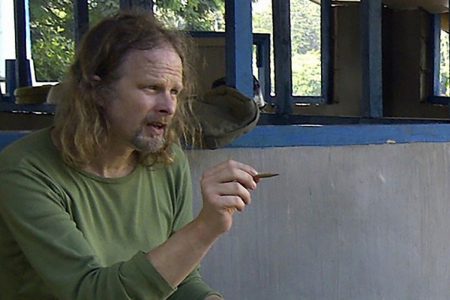
Islamic State-linked militants kill Dutch wildlife photographer in Philippines
A Dutch wildlife photographer taken hostage by militants linked to Islamic State
has been killed in the southern Philippines.
Elwold Horn, 59, from Holland, was shot by his captors after a firefight broke out on Friday between government security forces and militants belonging to the Abu Sayyaf terrorist group on the island of Sulu.
Six militants were killed, twelve wounded in the fighting when troops from the 32nd Infantry Battalion raided the militants’ hideout in the village of Pansul, Patikul township shortly before 8am, said regional military spokesman Colonel Gerry Besana.
Besana said Horn had escaped his captors when the fighting erupted but one of his guards followed and killed him.
“He suffered several bullet wounds. The operating troops actually had no idea he was there,” Besana said.
The firefight continued for an hour and a half, he said.
“I am shocked by this terrible outcome”, Blok said, “I have been in contact with the family. I will ask my counterpart in the Philippines for further clarification.”
Soldiers recovered his body alongside that of a woman identified as Mingayan Sahiron, the wife of Radullan Sahiron, a senior leader of the Abu Sayyaf
, who has a US$1 million bounty on his head offered by the US government. Sahiron has led the group in a series of abductions, including of two Americans in 2001.
Horn was captured in February 1, 2012, when five armed gunmen boarded the boat carrying him and his companion, Lorenzo Vinciguerra from Switzerland, in Panglima Sugala township. Their Filipino guide, Ivan Sarenas, was able to escape. In December 2014, Vinciguerra, using a jungle knife, killed one of his guards and escaped. He was recovered by government security forces.
Earlier this week, the police commander in Sulu, Pablo Labra, said Horn may have been suffering from Stockholm syndrome, a condition in which hostages develop an attachment to their captors as part of a survival strategy.
“Our men spotted him carrying a weapon with his captors recently,” Labra had said, adding he had received a report that Horn was fighting alongside Abu Sayyaf. “We will continue our effort to rescue him but if he engages with our police we have no other choice but to fight back,” he had said.
The Abu Sayyaf group is believed to be holding eight other captives, including a Vietnamese, a Malaysian, two Indonesians, and three Filipinos, on the island.
Founded in the early 1990s, Abu Sayyaf has become notorious for carrying out kidnappings, bombings and beheadings in the southern Philippines and has been blacklisted by the United States
as a foreign terrorist organisation.
It is the smallest, but considered the most brutal, of several armed groups that operate in the restive south. Three years ago, it beheaded two Canadian hostages and a German captive after their governments refused to pay ransoms.
One of its leaders, Isnilon Hapilon, was later named the head of the Islamic State extremist group in the southern region. He was killed in October 2017 along with his aides, at the end of a five-month battle with government forces after leading militants in a siege of the southern city of Marawi.
On January this year, Abu Sayyaf bombed a Roman Catholic Church
in Jolo, killing at least 23 people and wounding more than a hundred others. They also detonated a car bomb at a military checkpoint in Basilan in July 2018 that left 11 people dead.
Source: SCMP





